|




The
Early Greek Astronomers
Thales of
Miletus, Philolaus of Croton, Eudoxus of Cnidos
George Pararas-Carayannis
(Excerpts
from series of articles published in the Hellenic Free Press,
Chicago, 1960)

INTRODUCTION
For thousands
of years people looked up to the skies and wondered about the
Sun, Moon, planets, stars, and their complex ballet of motions.
The first known attempt to explain these apparent motions of
celestial bodies in scientific terms, is to be found in Greece,
in the fifth century B.C. The Ancient Greeks were the founders
of the majority of today's mathematics and astronomy. Early Greek
philosophers/scientists/mathematecians laid down the first principles
of mathematics. In the time span from 600 B.C. to 250 B.C. more
break-through accomplishments were made in mathematics than in
any other time span of the same length.
Through their mathematical principles, these early Greeks laid
the foundations and invented methods to explain celestial motions.
Thales, Euclid, Pethagoras, Anaxagoras, Aristarchus, Aristotle,
Apollonius, Archimedes, Aristarchus, Aristotle, Autolycus of
Pitane, Callippus, Cleomedes, Conon, Democritus, Eratosthenes,
Eudoxus, Eutocius, Geminus, Heraclides of Pontus, Heron, Hipparchus,
Hypsicles, Menelaus, Pappus, Plato, Porphyry, Posidonius, Proclus,
Simplicius, Theodosius, Theon of Alexandria,Theon of Smyrna ,
Ptolemy and many others, founded the majority of today's mathematics
and astronomy. The best known of these early Greek astronomers
and mathematicians are those who contributed to the development
of modern scientific results.
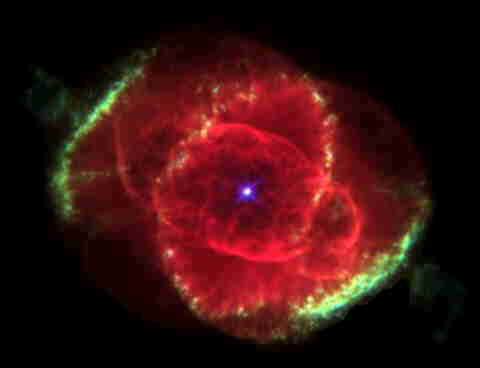 The
first known attempt to explain the apparent motions of celestial
bodies in scientific terms, is to be found in Greece, in the
fifth century B.C. The
first known attempt to explain the apparent motions of celestial
bodies in scientific terms, is to be found in Greece, in the
fifth century B.C.
THE PYTHAGOREAN SCHOOL
The Pythagoreans
- Pythagoras 's followers - held that the earth is a sphere,
whereas Thales, who lived 100 years earlier, believed it to be
a disk afloat on the ocean. They also thought that all celestial
motions are circular, geometric, and of constant speed. However,
Philolaus of Croton, a Pythagorean, was the first to discard
the view that the earth is the center of the universe, but retained
the motion of circular orbits. He assumed that all the known
bodies - the sun, the moon, Mercury, Venus, Mars, Jupiter and
Saturn- revolved around a central fire. As he explained it, the
fire could not be seen from Greece because that side of the earth
was always away from it. But these ideas were too contrary to
common-sense experience to be readily accepted. Philolaus had
few followers.
EUDOXUS
OF CNIDOS
In the fourth century B.C., the standard-bearer of Greek cosmology
was, without a doubt, Eudoxus of Cnidos, who has been called
the founder of scientific astronomy. The theory of Eudoxus was
a complex mathematical attempt to explain the motions of celestial
bodies.

Eudoxus
was born in Cnidos at the year 408 B.C. He studied geometry and
medicine, and became a pupil of Plato at the age of twenty-three.
After learning Pythagorean astronomy at the newly founded academy,
he traveled to Egypt where he remained for some time. There he
found the opportunity to supplement by his own observations (at
an observatory near Heliopolis) the already extensive material
that he secured from Egyptian astronomers. The geometric interpretation
of celestial motions devised by Eudoxus is called the "theory
of homocentric spheres". By this theory, he attempted to
account for all the peculiarities in the apparent paths of celestial
bodies, and particularly for the "loops" in the sidereal
motion of planets.
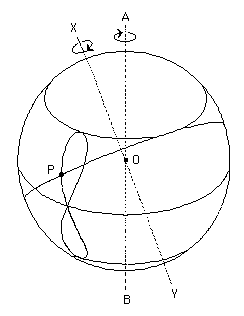 Eudoxus retained the Pythagorean
principles of a static earth and of uniformly circular celestial
motions. However, since the apparent orbits of planets depart
appreciably from a circle, he attempted to explain these vagaries
as combinations of circular motions. He devised then the "theory
of concentric spheres" giving, thus, a rational explanation
of what may be happening. Within the accuracy of observation
available in his day, Eudoxus' theory gave a satisfactory account
of the apparent motions of Venus, Mars, Jupiter and Saturn with
the possible exception of Mars. This planet's orbit, being somewhat
more elliptical than those of Jupiter and Saturn, lent itself
less readily to a description in terms of circular motions. Eudoxus'
system of homocentric spheres gained wide acceptance. In the
ensuing centuries, this original system was modified gradually
by the introduction of new data and the increasing accuracy of
observations. It was adopted by Aristotle without essential alterations
and was superseded only by the theories of Hipparchus in the
second century B.C. Eudoxus retained the Pythagorean
principles of a static earth and of uniformly circular celestial
motions. However, since the apparent orbits of planets depart
appreciably from a circle, he attempted to explain these vagaries
as combinations of circular motions. He devised then the "theory
of concentric spheres" giving, thus, a rational explanation
of what may be happening. Within the accuracy of observation
available in his day, Eudoxus' theory gave a satisfactory account
of the apparent motions of Venus, Mars, Jupiter and Saturn with
the possible exception of Mars. This planet's orbit, being somewhat
more elliptical than those of Jupiter and Saturn, lent itself
less readily to a description in terms of circular motions. Eudoxus'
system of homocentric spheres gained wide acceptance. In the
ensuing centuries, this original system was modified gradually
by the introduction of new data and the increasing accuracy of
observations. It was adopted by Aristotle without essential alterations
and was superseded only by the theories of Hipparchus in the
second century B.C.

 Aristotle Aristotle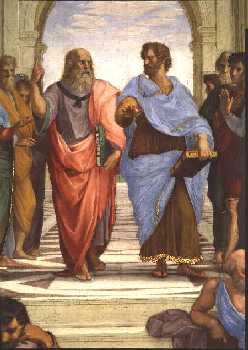 Aristotle and Plato
at The Peripatetic School of Athens (Painting by Raphael) Aristotle and Plato
at The Peripatetic School of Athens (Painting by Raphael)
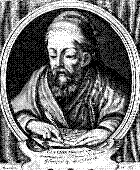 Euclid Euclid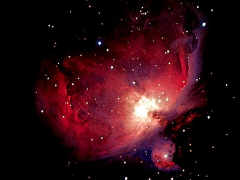 The
Great Orion (US Naval Observatory) The
Great Orion (US Naval Observatory)
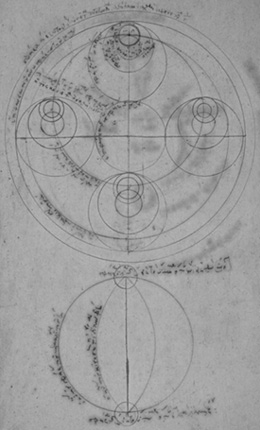 Greek Asto Vatican Greek Asto Vatican mebula mebula
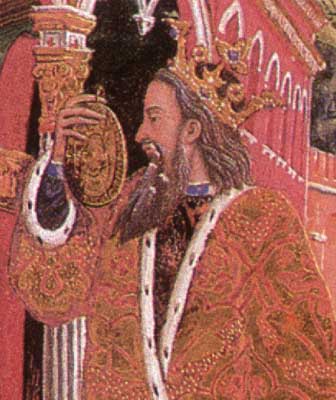 Ptolemy's Astrolabe Ptolemy's Astrolabe
 Pythagoras Pythagoras

 RETURN TO MAIN PAGE
RETURN TO MAIN PAGE

© 2000 George Pararas-Carayannis
|